Advantage:
+ Improved retention of highlights compared to competitor
+ Fun, dynamic and easy editing tools
+ Excellent stability
+ Compatible with existing One RS components
Disadvantage:
-Not much improvement in low light shooting
-Limited IPX3 water resistance
-Not suitable for extreme sports
-360 degree cameras are expensive
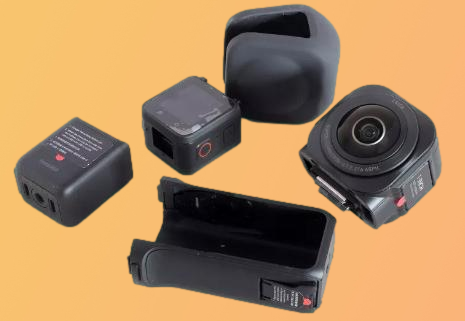
The Insta360 One RS 1-inch 360 Edition is a modular 360-degree action camera with an unusually large image sensor. There are two 1-inch sensors on each side of its lens module.
The One RS 1-inch 360 Edition is larger and more expensive than the best 360-degree cameras we've picked so far. But the image quality is good.
The main benefit of its larger sensor is a higher dynamic range, which means better high light retention and superior low light performance. The former is the most important, because this is still not a particularly comfortable camcorder to shoot at night. Cropped to nighttime scenes, the gain in clarity is marginal compared to alternatives like the GoPro Max (and its 1/2.3-inch sensor).
One of the main advantages of the Insta360 camera is that its applications (for both desktop and mobile devices) are intuitive and powerful. The software also makes the critical editing stages relatively simple for those new to 360-degree cameras, thanks to features such as object tracking and automatic transitions between frames.

It is an impressive and fun to use camera. And don't worry about scratching its lens.
The standard price of Insta360 One RS 1-inch panoramic version is 499 yuan. You can also choose a package that includes the core body, camera accessories, battery compartment, lens cover and mounting bracket.
Those who already own the Insta360 One RS can purchase a package without the display module. Previous camera batteries cannot be used because the Insta360 ONE RS 1-inch has a custom design that fits the grip.
It was released in late June 2022, two years after the Insta360 One X2, a cheaper 360-degree camera from the same company.
Design:
> Slightly bulky stick design
> Part of the One RS modular system
> Relatively limited IPX3 water resistance
> Its lens module is the most noticeable. It contains the screen and memory card. The battery is located at the bottom, and a slim casing surrounds the plot.
> The stick arrangement of the modules makes the camera itself a hand grip, just hold it by itself.
> A rubber lens cover that needs to pop out when the Insta360 One RS 1-inch 360 is not in use.
> It has IPX3 water resistance and can handle water sprays up to 60 degrees vertically.
> After a few minutes of shooting, the camera starts to get hot. Of course, this is normal.
> There is a 1/4 threaded port on the bottom. It screws directly into selfie sticks and tripods – no extra accessories required.
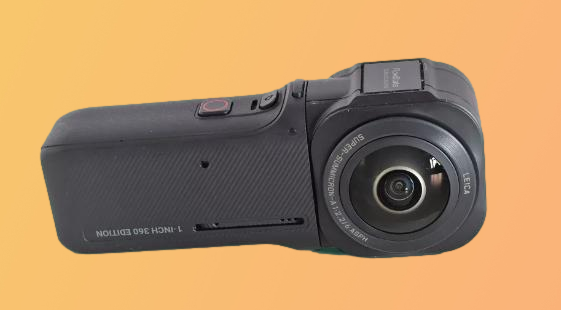
Interface:
> The interface style is the same as previous Insta360 cameras
> The small screen will feel a bit fussy
> But 360-degree shooting makes framing no longer a problem.
From the front and side, there is little indication that the Insta360 One RS 1-inch 360 Edition is modular. The case has its own buttons that push into the controls on the main module, which feels great. The power and shutter buttons are located near where the thumb is naturally placed. However, it is most suitable for right-handed people, and the shell is irreversible.
From the back, the Insta360 One RS 1-inch 360 Edition will become more familiar to anyone who has used an Insta360 camera before. The silhouette of the classic display module is clearly visible, which brings up the tradeoff we mention in every Insta360 modular camera review.
The preview image is much smaller than the GoPro Hero 10 Black or the GoPro Max, and the display itself has a fairly low resolution. But, compared to the Insta360's non-360 camera, the Insta360 One RS 1-inch 360 seems to be much less of a problem.

Here, you are composing after the shot, so the main concern is where to point the lens to avoid focusing anywhere near the "seam" of the two cameras' fields of view.
Insta360's interface, though, is starting to show its time. It's no different than most low-cost action camera software from brands you've never encountered, and it doesn't have the swooshing sound with inertia that GoPro uses.
About a year ago, the Insta360 style would sometimes look refreshing next to the rather slow and laggy GoPro style. But thanks to the new GP2 processor, the responsiveness of the GoPro Hero 10 Black is significantly improved.
Still, Insta360 wants you to use the interface here less when you're shooting. You usually just swipe left or right across the screen to select the mode you want -- video, still image, time-lapse, etc. It's a wide, shallow layout that fits into a small, delicate touchscreen, and GoPro makes more use of submenus.
> Performance and image quality
> As expected, the stability is excellent.
> Better dynamic range than most 360 competitors
> Low light image quality is only noticeable in tripod StarLapse mode
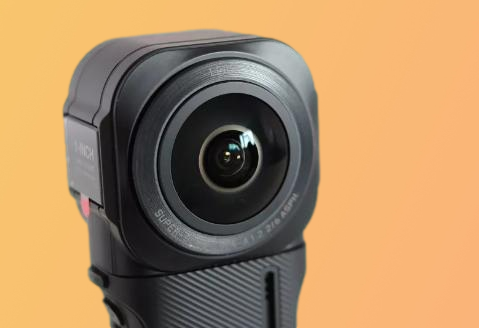
When shooting with Insta360 One RS 1-inch 360 Edition, you can almost have no scruples. The look of the footage depends heavily on the editing, and Insta360's FlowState stability is nearly flawless.
It has a horizontal calibration feature, and since the captured image is a complete sphere, the frame seen by the viewer can be moved infinitely to counteract the motion. There are some limitations – holding the Insta360 One RS 1-inch 360 for walking or running, it doesn't look like it's attached to the camera track monorail, because there will be some up and down motion that even the stability can't be mitigated. But we definitely didn't complain about the smoothness of the lens.
About image quality:
The 5.7K resolution at 30 FPS is the top shooting mode for the Insta360 One RS 1-inch 360 version, matching the GoPro Max and Insta360 One X2. Even if you reduce the resolution, there is no 60fps mode. 50fps is the maximum for 3 K, and there is no lower resolution because that won't give you enough information to crop a 360 degree shot. Zoom in far enough and the picture will look soft. This is a bigger sensor, not a magic sensor.
There's no slow motion, and-the part we want-there's no traditional "flat" shooting mode. We don't mean the Log-style dynamic range preserving shooting style, but a non-360 FOV that lets you generate ready-to-use files. Everything needs to be edited from a 360-degree capture, making the Insta360 One RS 1-inch 360 less approachable than the GoPro Max. If you want, the GoPro can be used like a regular non-360 action camera.
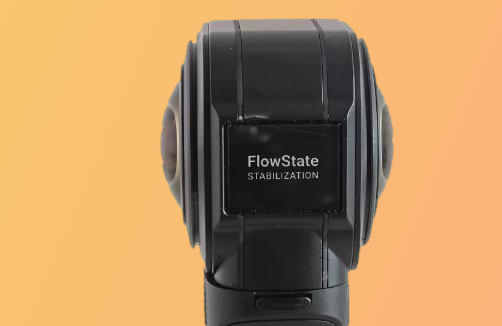
Again, while there are neat TimeShift and TimeLapse modes, they are only accessible through the Insta360 application. You can't watch the previews on the Insta360 One RS 1-inch 360 screen, nor can you easily remove them from the microSD card. As always, the GoPro experience is smoother in some ways than the Insta360.
But back to our original question: What are the advantages of those 1-inch sensors? We believe that the first priority is highlight retention, which can be achieved with a higher native dynamic range.
This effect is most common in blown clouds. If you are shooting an open blue sky with a few clouds, this is not a big deal for a normal action camera. But once there is enough partial leaf cover for the camera to raise its exposure, the action camera turns the bright clouds into featureless white blobs.
A large sensor can also help at night, but we weren't impressed with the Insta360 One RS 1-inch 360 version's night shots. The picture may look okay, zoomed in all the way, but perform significant cropping to get a flat final video, and everything looks mushy at night. The clarity improvement is minimal compared to the 1/2.3-inch sensor GoPro Max.
To get a decent image in real low light, you must use the StarLapse mode. This combines long exposure still images and is therefore only suitable for tripod use and certain scenes.

The Insta360 One RS 1-inch 360 Edition also features the classic Insta360 approach to detail. Even on the "High Definition" setting, it tries to retain or at least exhibit more fine detail than the GoPro Max.
There are benefits and tradeoffs. The 360-view capture at 6 K resolution is edited to a flat image in both cameras, and the Insta360 clip looks even more important, with a presentation that almost resembles 4K-although the edited flat video is only output at 1080p.
However, this method also causes flickering details in the texture when moving. Grass, brick, sidewalks, and gravel roads can all be severely affected at times. The GoPro Max has almost none of that, because its whole approach is different — its goal is to get a slightly softer but more consistent image.
Among other things, the Insta360 One RS 1-inch 360 Edition is technically superior to its GoPro rival. Compared to the GoPro Max, for example, the Insta360 One RS 1-inch 360 lens has significantly less chromatic aberration at the two camera connection points and is very sharp at the camera boundaries.
Most good 360-degree cameras are reliable in this regard, but this means there is less evidence of seams when you do dramatic panning.
Insta360 Studio is also available for desktop use
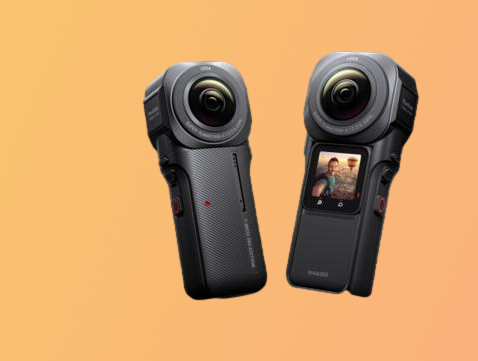
The Insta360 editing process is great. This can be done using a desktop application called Insta360 Studio or a standard phone application.
Multiview is another option. This is a picture-in-picture mode for vlog style video. It uses facial recognition to show the cropped part of the person most likely to take the video. This should be popular with content creators who want a multi-camera look when using a single camera.
It can be done with elegant transitions, not just pop and pop, but if you want MultiView, you'll probably want it for the entire clip. Insta360 also offers a desktop application, called Insta360 Studio, which is free to use.
Insta360 says the Insta360 One RS 1-inch 360 Edition battery can last up to 62 minutes when shooting in the top 6 K/30 mode.
A 20-minute video consumes 29% of the battery, suggesting it can last up to 68 minutes.
The Insta360 One RS 1-inch 360 Edition can capture still images. There's an automatic mode, an HDR mode, and both offer a lot of manual customization. You can manually control the shutter speed, HDR effect, and bracketing.
Still shots feel slow, though, like most action cameras.
The audio quality is about the same as the Insta360 One RS because the central module with the microphone is the same. It's okay, but it's nothing special, which is why the Insta360 offers a microphone module that plugs into the USB-C port on the side. You can plug in your own microphone using a 3.5mm socket.
The Insta360 One RS 1-inch Panorama has a larger sensor than other consumer 360-degree action cameras. This improves dynamic range and helps retain more highlight information when shooting during the day. It also produces sharper images when shooting indoors in dim light.

